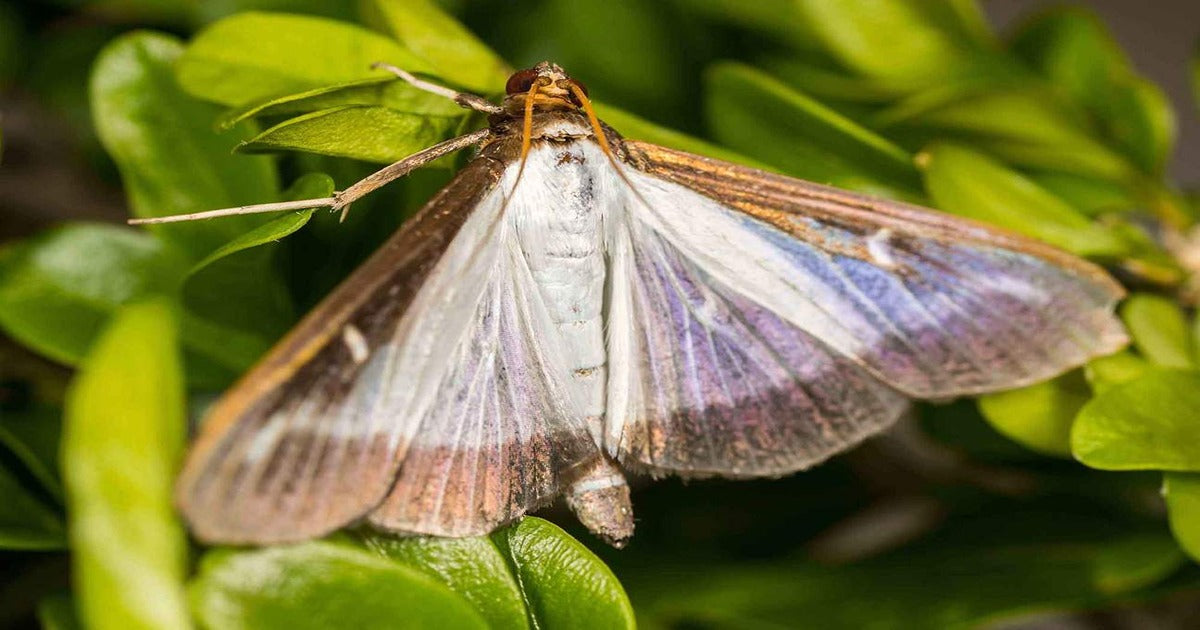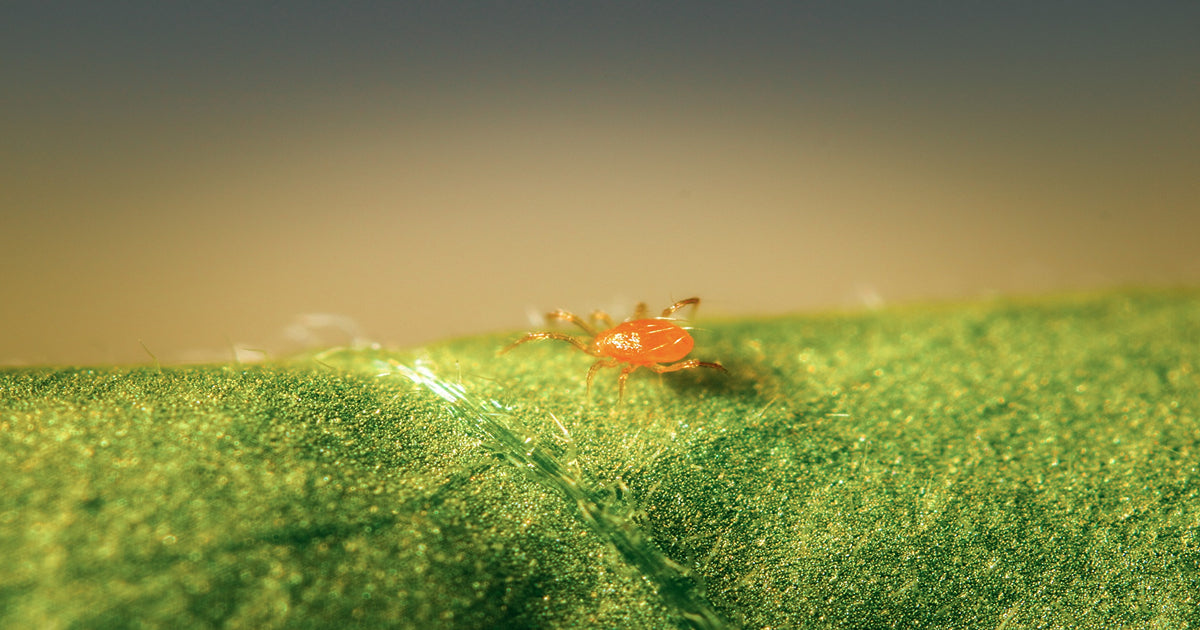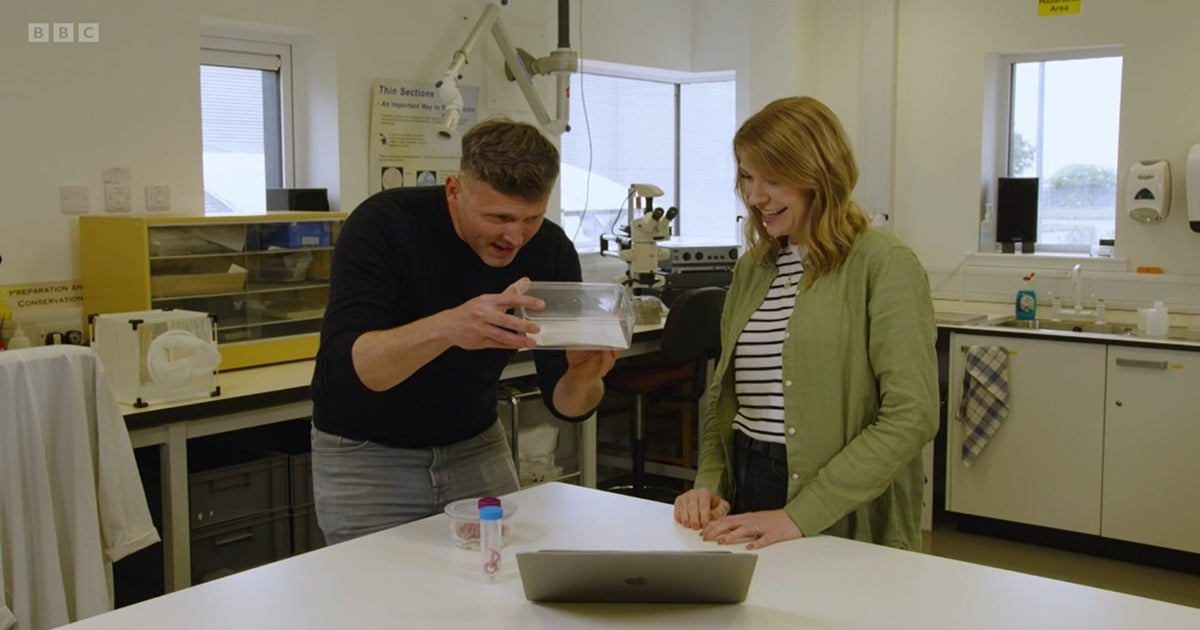
Dragonfli's Three-Step Strategy To Combat The Entire Box Tree Moth Life Cycle
Box Tree Moths overwinter as caterpillars that hide deep inside the Box Plant foliage. As temperatures warm, the caterpillars will pupate and transform into moths. The female moths will proceed to mate and begin laying eggs in little clusters on Box tree plants. These eggs will then hatch into the damaging caterpillars that devastate and kill Box plants and hedges.
Dragonfli are on hand to help, however, and can now provide natural solutions against two critical stages of the Box Tree Moth life cycle!

Box Tree Caterpillars feed on Box plants and hedges and are capable of killing Buxus entirely if left untreated.
Stage 1: Catch Adult Box Tree Moths With Pheromone Traps To Reduce Egg Laying
The first step to take in combating Box Tree Moths is to set up your Box Tree Moth Pheromone Traps. These traps will catch male Box Tree Moths and prevent them from mating with females. The traps will also provide you with a valuable early warning of Box Tree Moth activity.
Our Box Tree Moth Pheromone Traps are the first key component in the defence against Box Tree Moth infestations.
Box Tree Moths have 2-3 generations a year, so it is good practice to keep your Box Tree Pheromone Traps active all spring and summer. Each pheromone lure lasts about six weeks, after which it should then be replaced. You can find replacement lures by clicking here.
Pheromone traps used solely will not catch enough Box Tree Moths to prevent entire infestations, so please be sure to also follow the next steps.

Box Tree Moths are identifiable with white coloured wings bordered by brown. They have a wingspan of roughly 4cm.
Stage 2: Apply Nematodes Directly Onto Box Tree Caterpillars
If Box Tree Caterpillars are observed on Box plants, apply our Box Tree Caterpillar Killer Nematodes directly onto the caterpillars. Only apply the nematodes if caterpillars are present. More than one application may be required, which is why two sachets of nematodes are included in Box Tree Caterpillar Killer. Apply the first sachet when Box Tree Caterpillars are identified, and apply the second sachet about a week later.

Simply spray our Box Tree Caterpillar Killer directly onto the caterpillars and the nematodes will enter the pest via a natural opening, before killing the caterpillars from inside.
Make sure unopened nematode sachets are stored in a fridge to keep them fresh, and avoid applying nematodes on bright, sunny days, as nematodes are U.V sensitive. The optimum conditions for applying nematodes are warm, overcast, humid days. Alternatively, simply apply the nematodes early, or late on in the day.

Box Tree Caterpillars can grow up to 30mm in length and are a greenish-yellow colour. They can be concealed within webbing spun around buxus plants.
Stage 3: Invigorate Renewed Box Plant Growth

Our two natural solutions combine to provide a complete biological control of Box Tree Moths and protect your valuable Box Hedges and plants from this devastating pest.
If looking to provide your Box plants with a further aid to recovery, consider also applying our Soil Boost biostimulant granules.
Soil Boost acts as an organic slow release fertiliser, helping the Box plants achieve newly invigorated growth after stress and damage.
If you ever need any further advice on how to combat Box Tree Moths feel free to get in touch via email at sales@dragonfli.co.uk, via social media, or by giving us a call on 01376 563322, and we’d be happy to assist.
Comments (Responses)
Tilly
I have Box Tree Moth caterpillars and the eggs…
I inspected my small hedges early this year and daily handpicked thousands of caterpillars off, they diminished in numbers week by week . Fairly sure I got them all. Had a lure in place in my small garden, no moths caught. This week’s inspection discovered tiny caterpillars, growing daily.
Can I use the nematodes and wasps simultaneously, if not it’s the chicken, I mean caterpillar or egg question. Which do you advise to use first?
Julian Ives
Hi Simon,
Many thanks for getting in touch.
Box Tree Caterpillars won’t attack apple trees so I would be surprised if they were present there. I think the caterpillars you are seeing are most likely Apple Ermine Caterpillars (Yponomeuta malinellus) which feed on Apples. They do indeed look similar to Box Tree Caterpillars with green and black colouring.
To control these, simply apply our Caterpillar Killer Nematodes. Just ensure that the nematode spray makes direct contact with the caterpillars.
I hope this helps but if you need any further assistance please just let us know,
Kind regards,
Julian Ives [Director, Dragonfli]
Simon Baynham
Do box hedge caterpillars also attack apple trees. I had a caterpillar infestation on my apple trees in May and the caterpillars look very much like Box hedge caterpillars
Julian Ives
Hi Laurence,
Many thanks for getting in touch.
I’m afraid our Box Tree Moth Egg Killer Sachets are exclusive to Dragonfli and that at present we are only able to ship them across the United Kingdom.
I hope you’re able to find what you’re looking for and if there is any other way we can assist you please just let us know.
Kind regards, Julian Ives [Director, Dragonfli]







31 July, 2024
Julian Ives
Hi Tilly,
Many thanks for getting in touch.
Sorry to hear of your infestation. Our Box Tree Caterpillar Nematodes and Box Tree Moth Egg Killer Sachets can indeed be used simultaneously. If you are seeing caterpillars now, however, it is best to focus on a successful nematode treatment while the pest is at this life cycle stage.
It’s really important when applying the nematodes to ensure that they come into direct contact with the caterpillars, applying them with the use of one of our dedicated nematode sprayers can help with the accuracy of treatment.
You may also need to make multiple nematode applications as it can sometimes be tricky to get the nematodes into the box plant itself and onto the caterpillars. We do supply a sticking agent called ‘NemAssist’ which will help the nematodes stay on the plant for longer when applied, increasing the likelihood that they will come into contact with the caterpillars. With a thorough spray and drenching you’re likely to have success.
As the caterpillars are emerging now this indicates that a new generation of the pest is coming through, so it will be worth ensuring you have an active lure in your trap to catch the moths as soon as they develop.
Once the caterpillars have gone it will be worth reconsidering our Box Tree Moth Egg Killer Sachets so the Trichogramma wasps can kill any new eggs laid by the moths and prevent the development of a further generation of caterpillars.
I hope this all makes sense but of course if you need any further assistance please just let us know and good luck with your treatment.
Kind regards, Julian Ives [Director, Dragonfli]